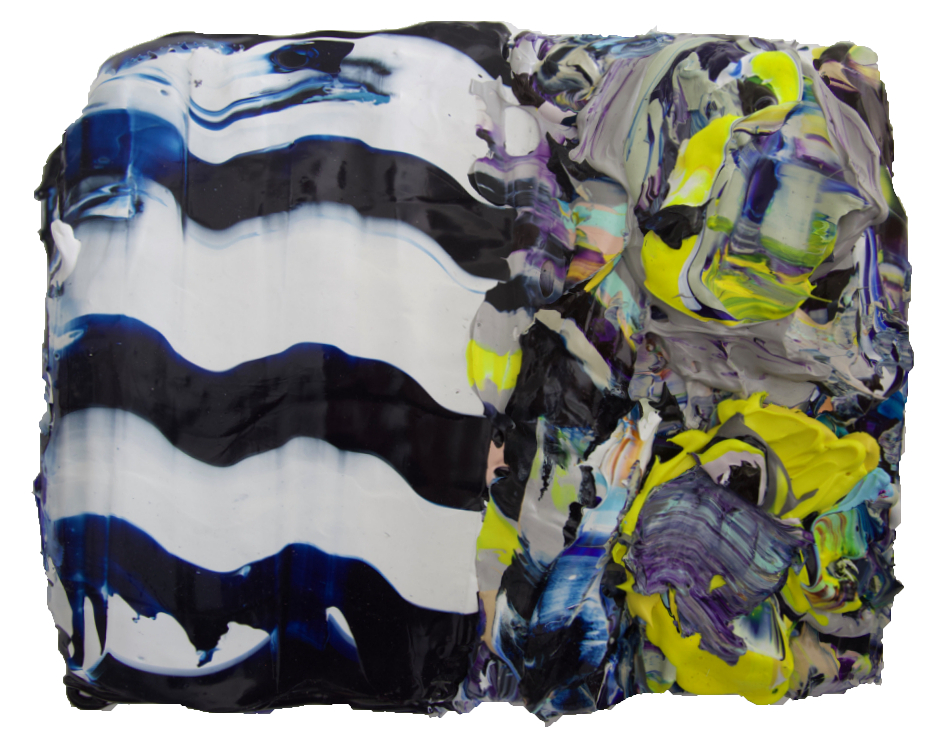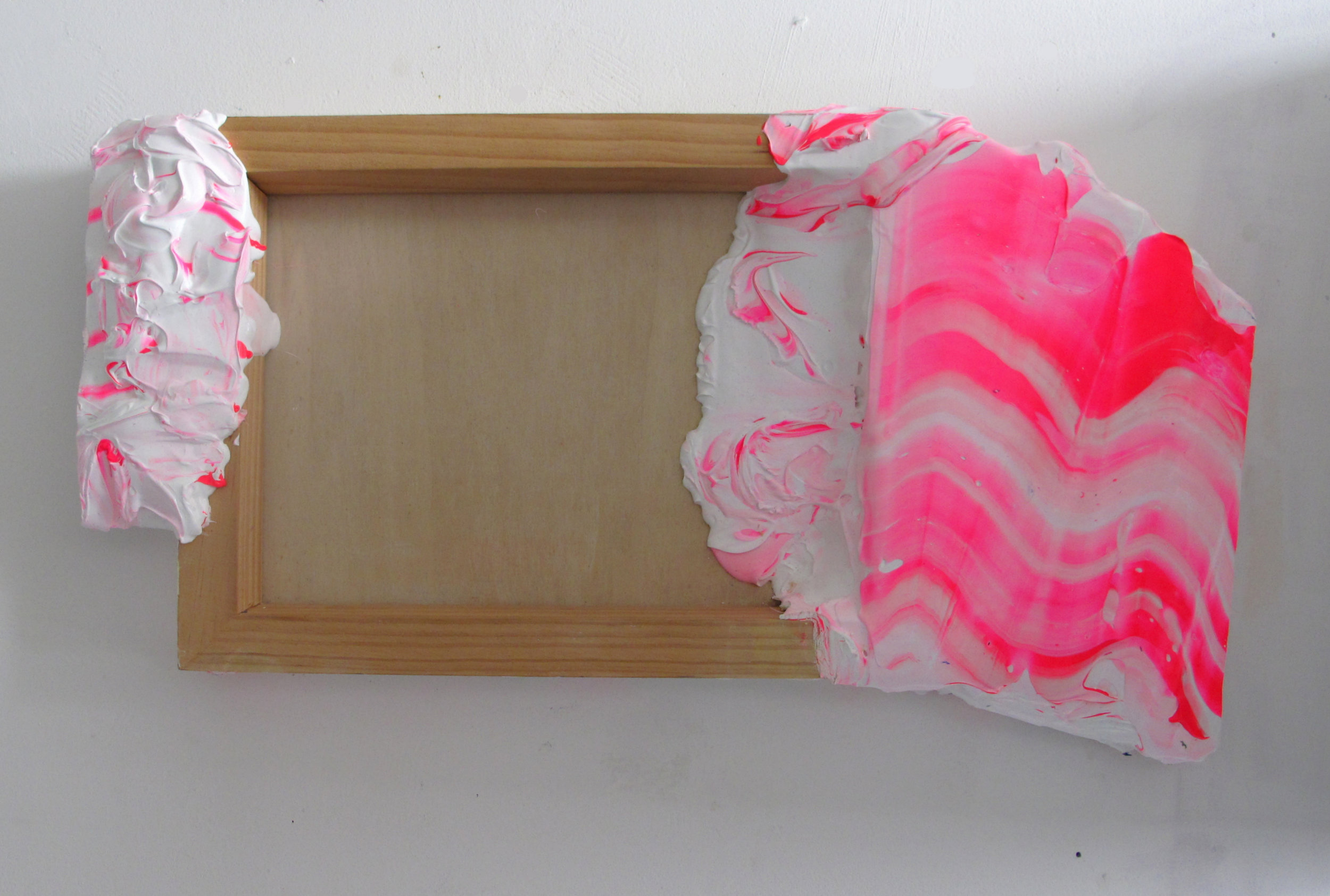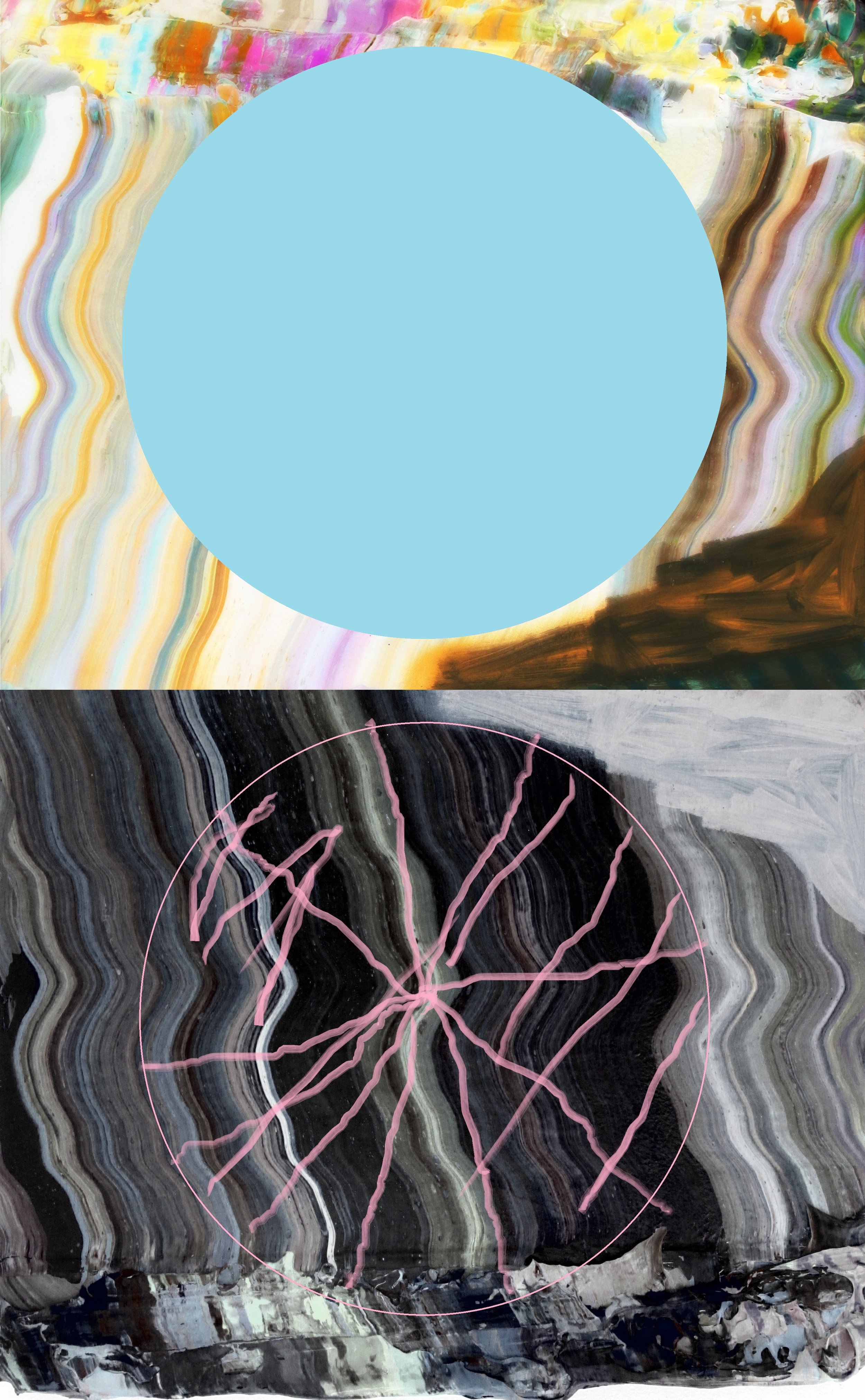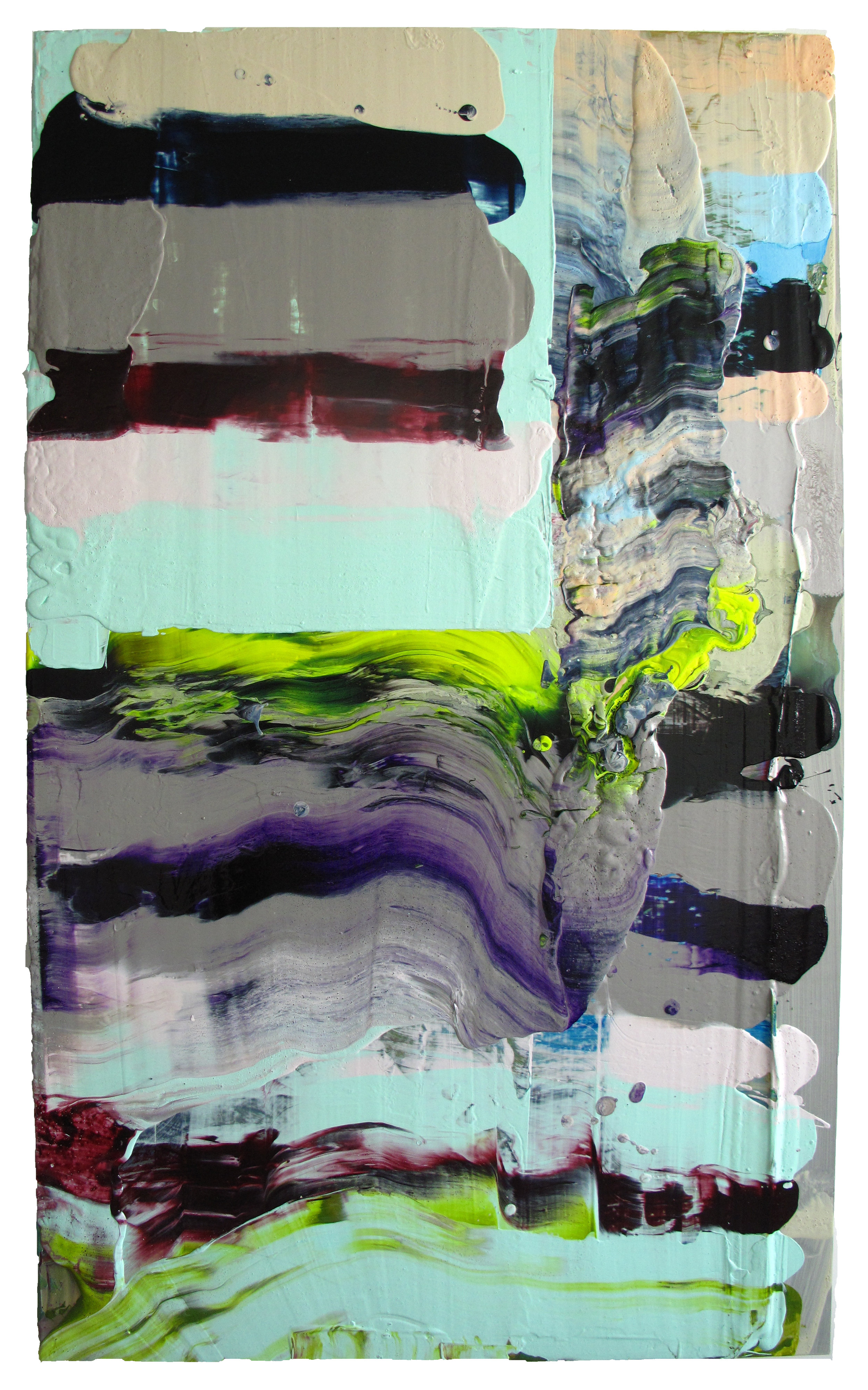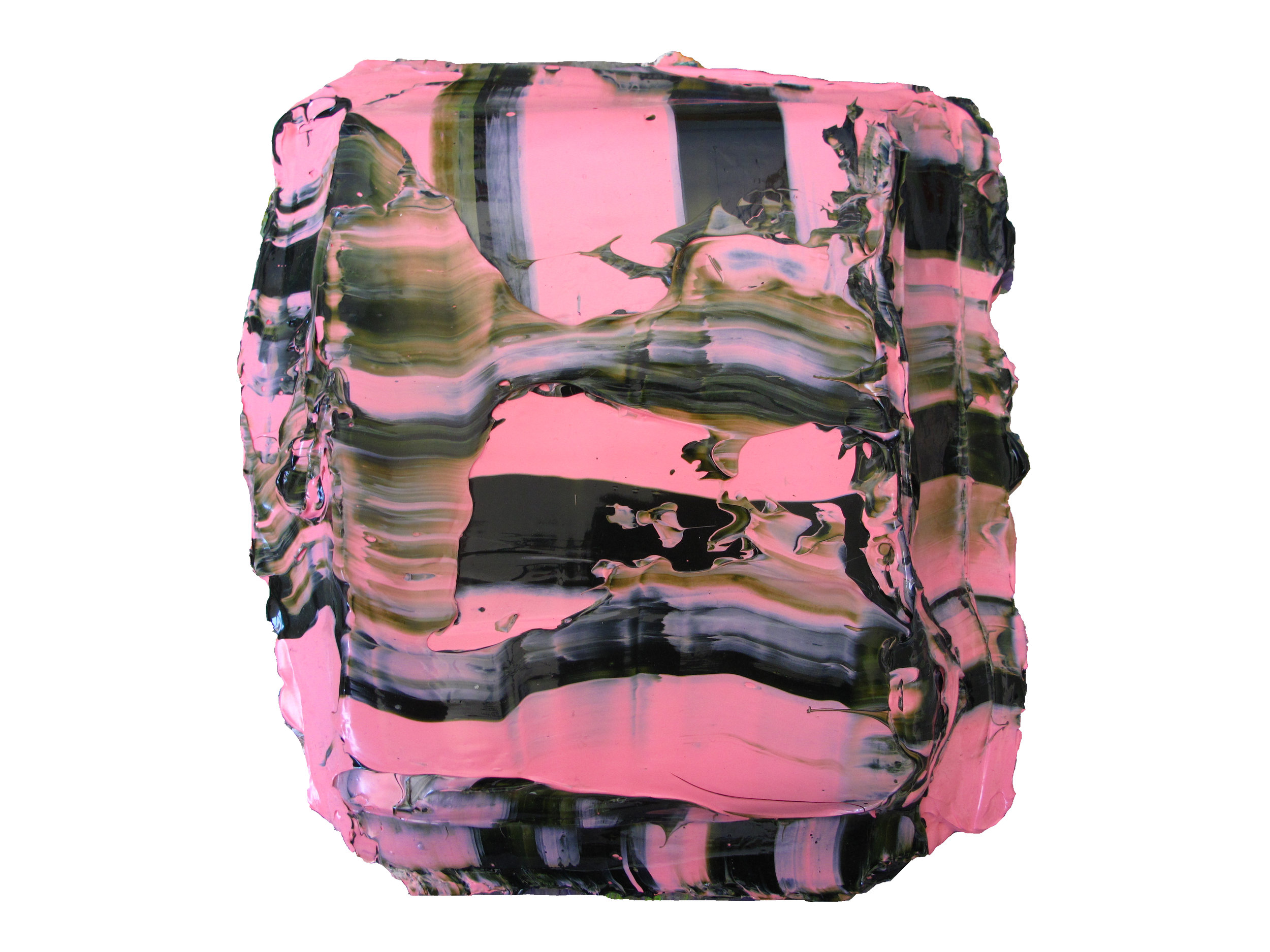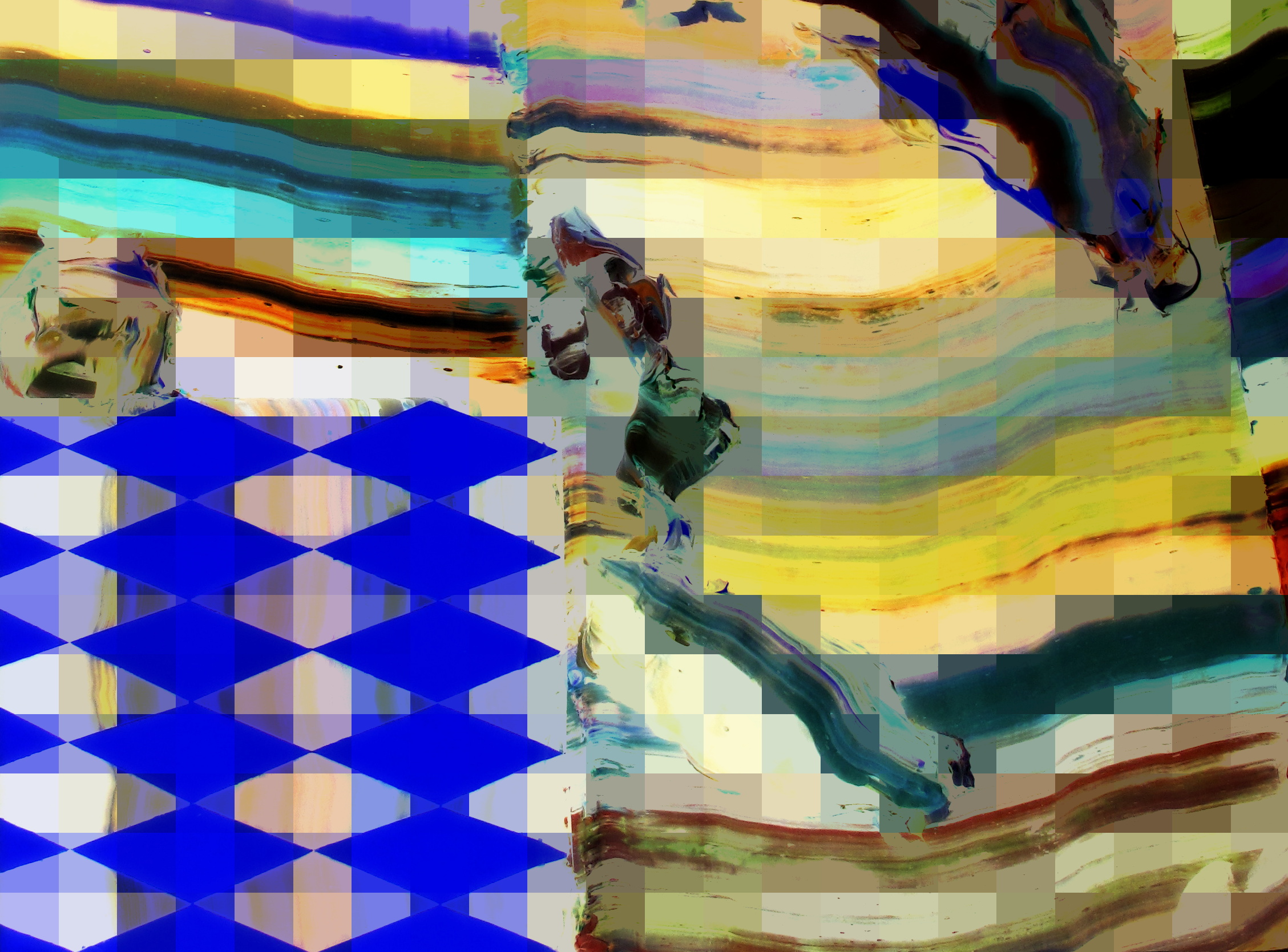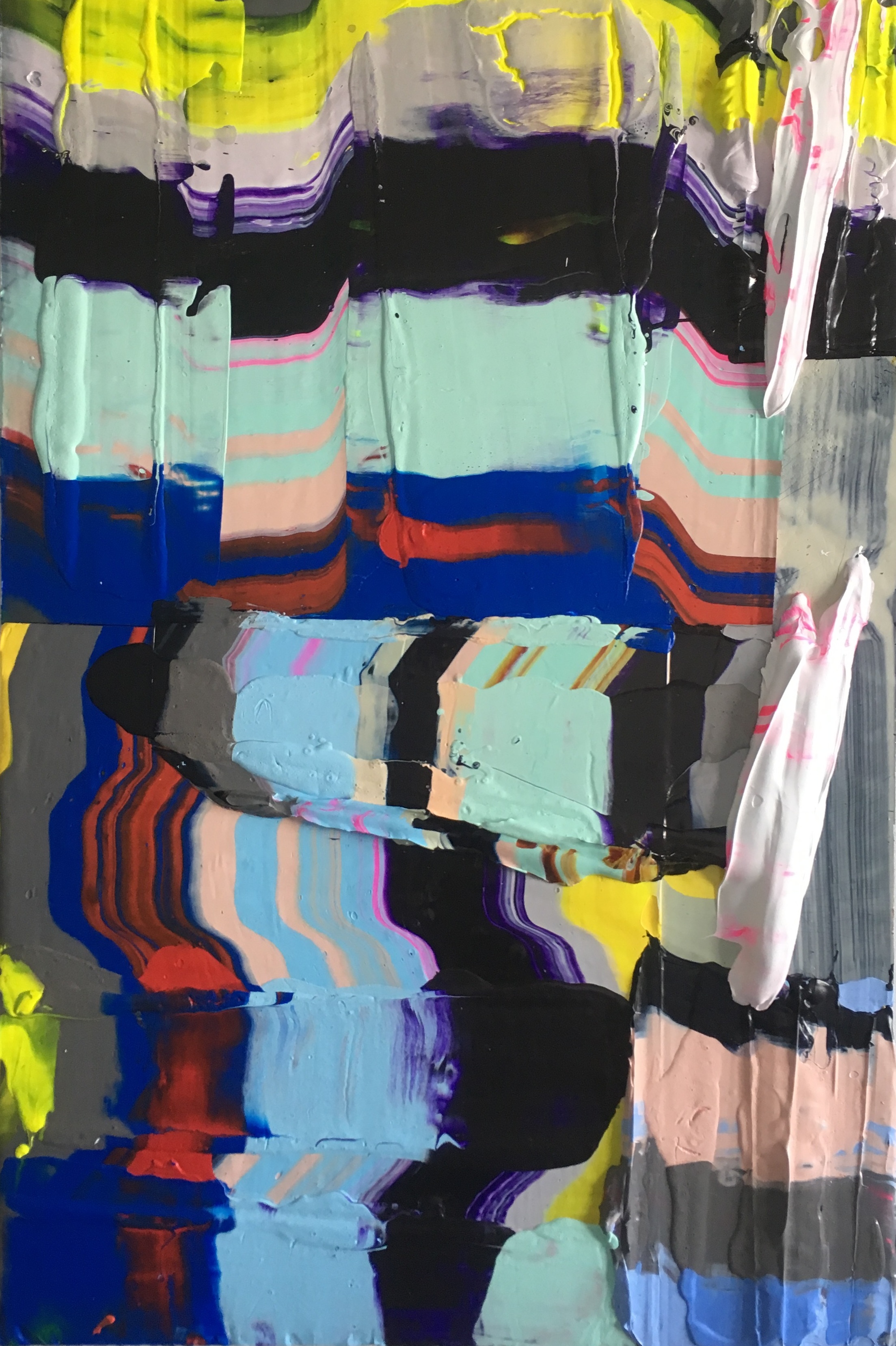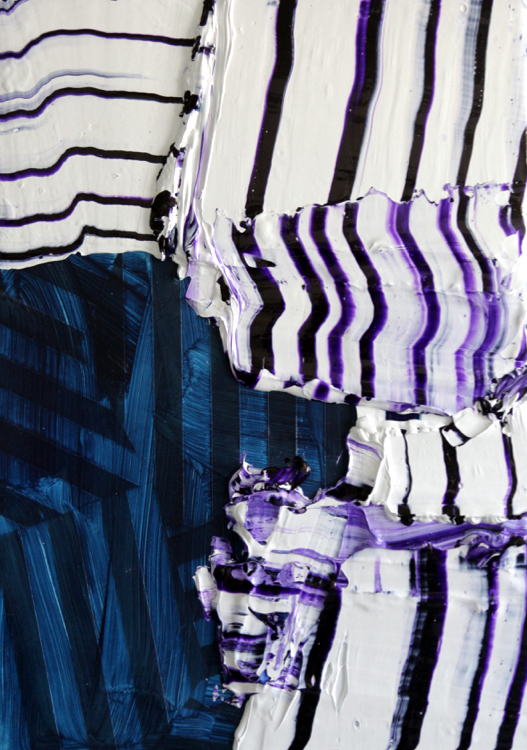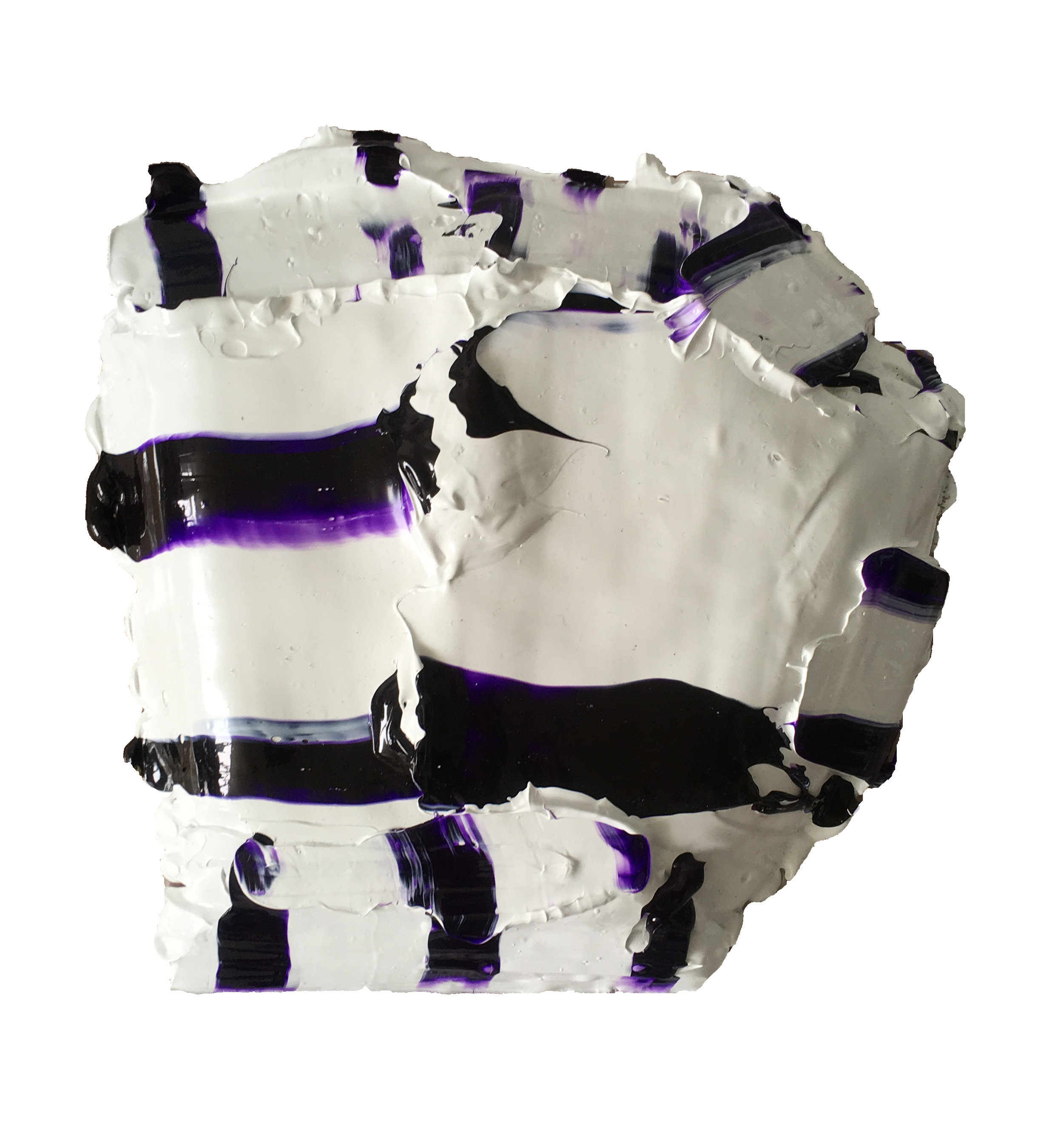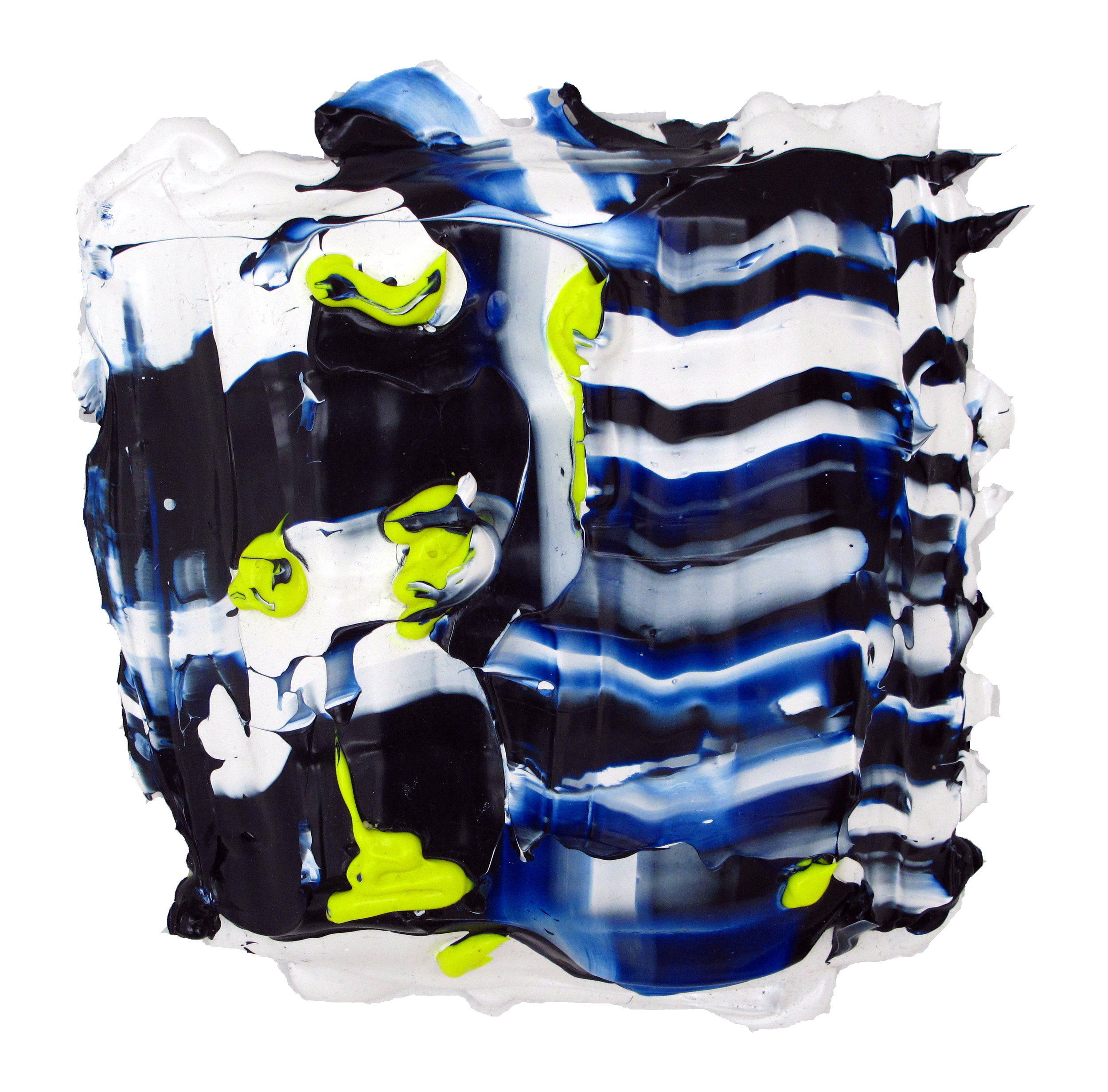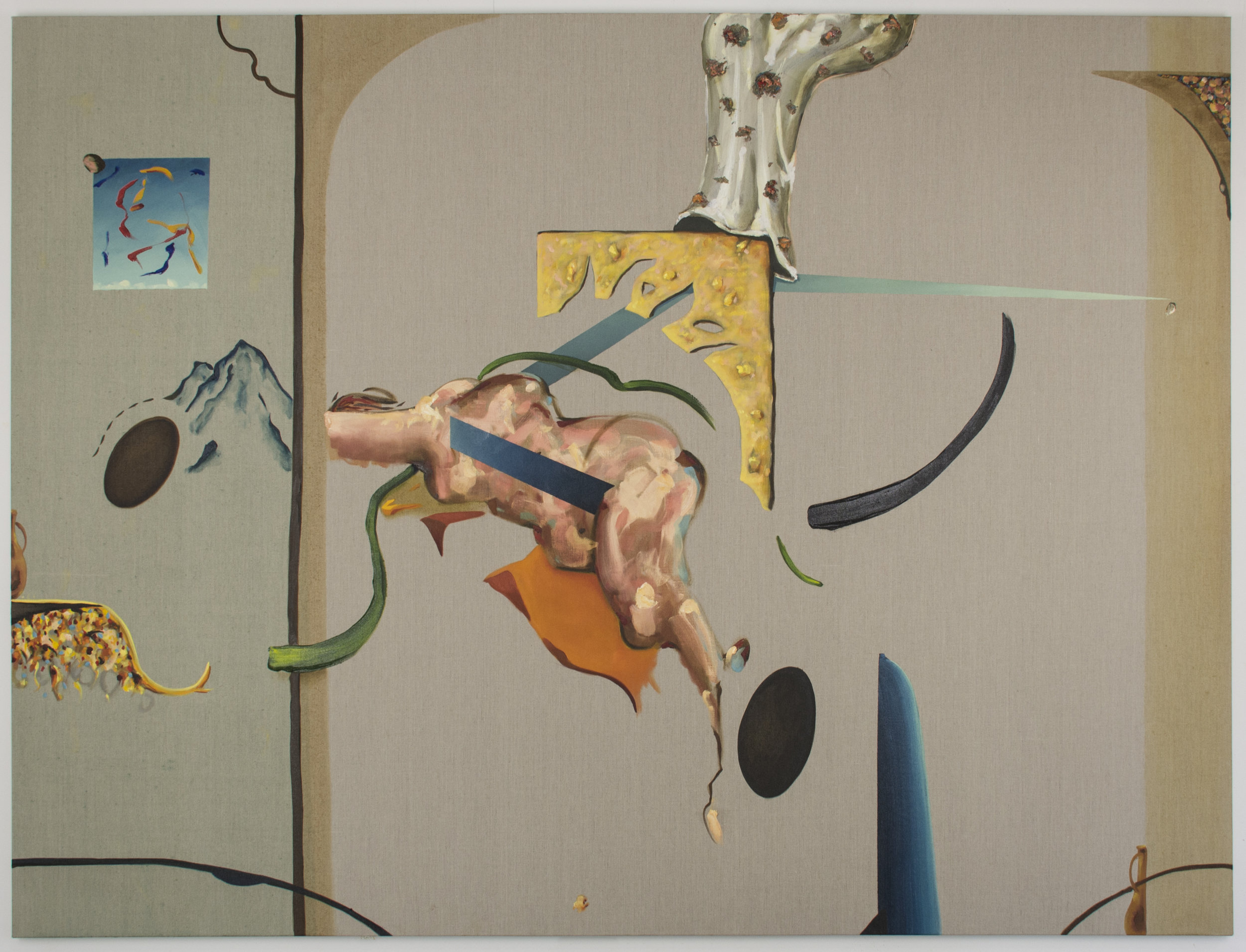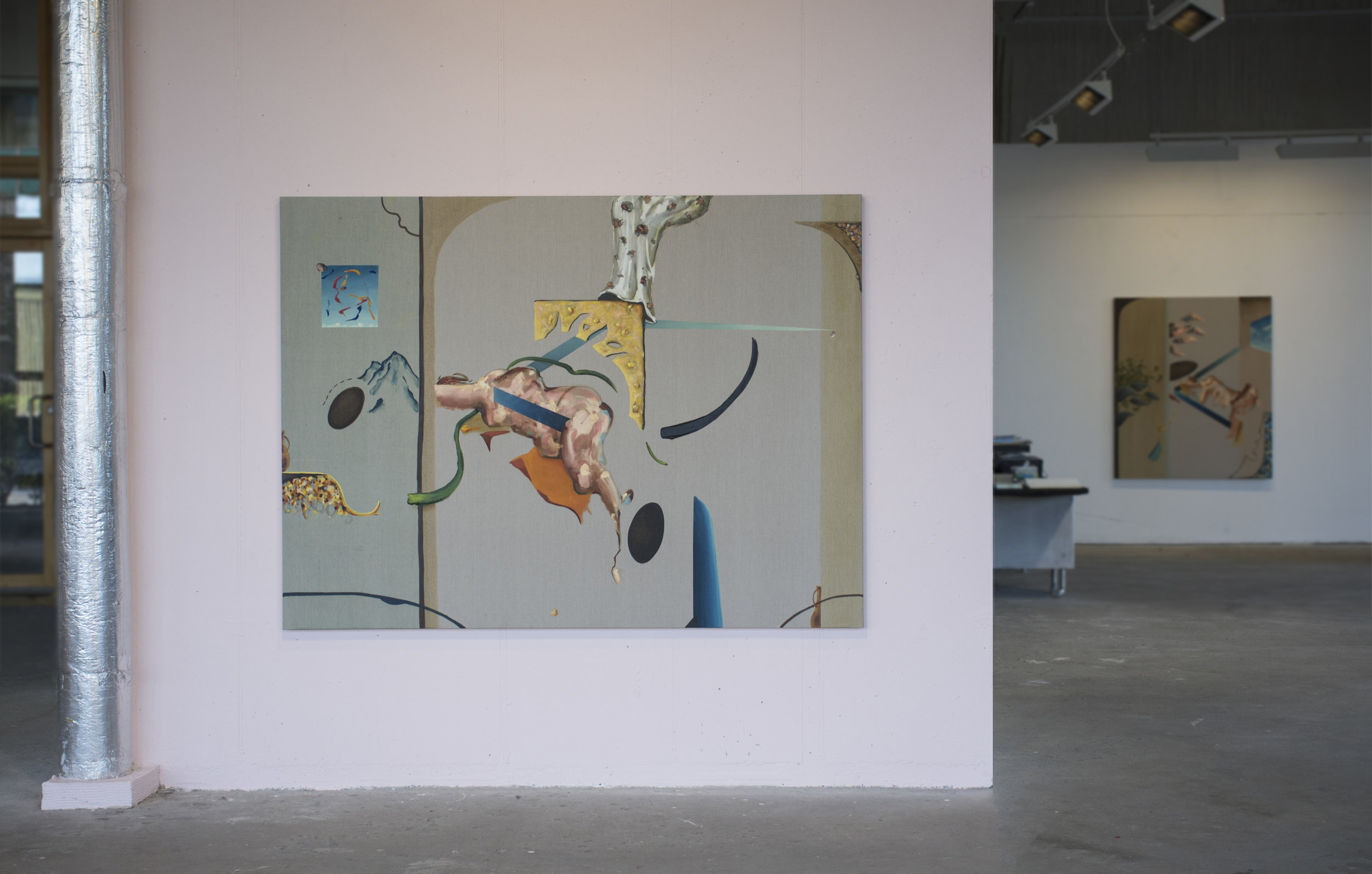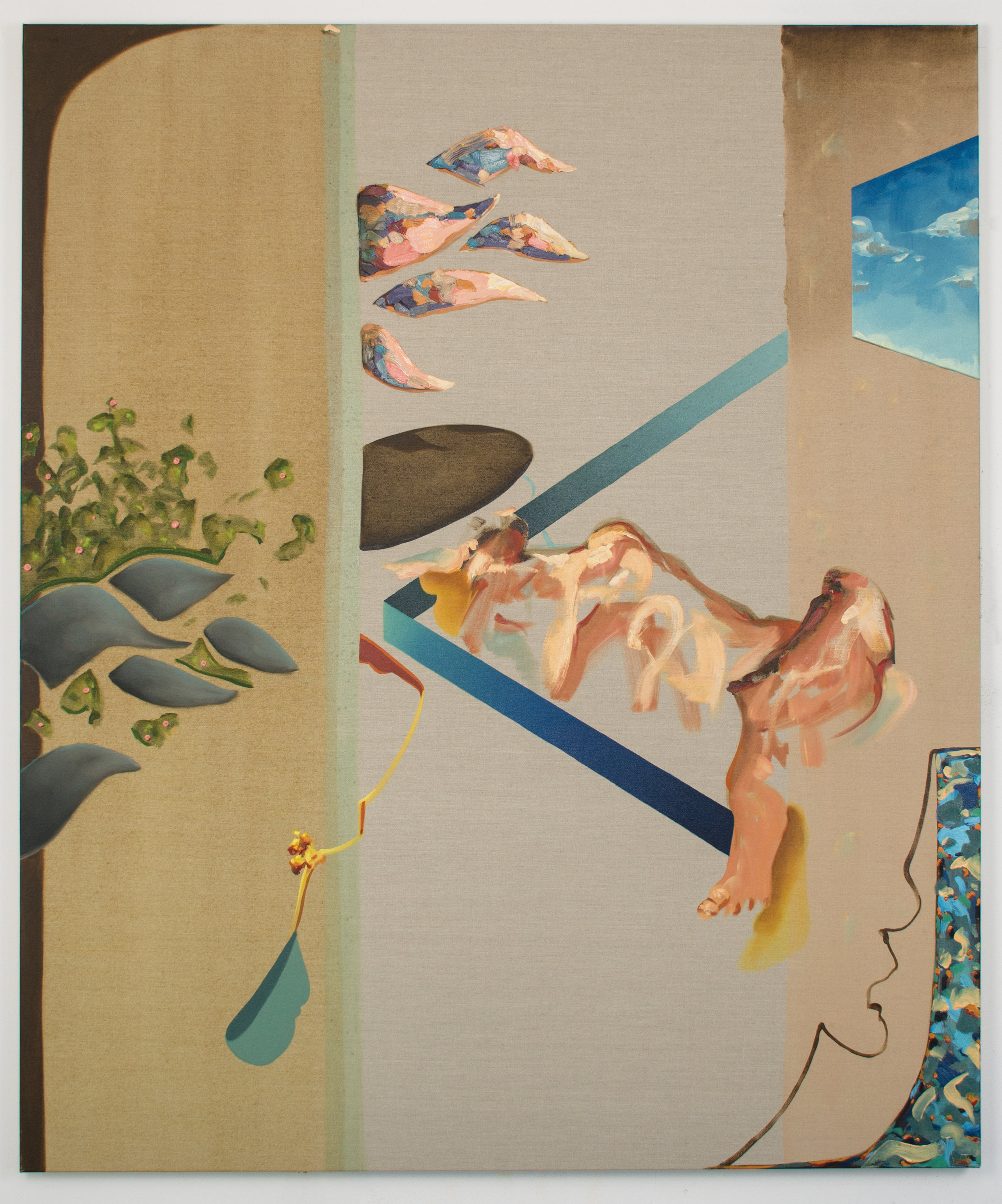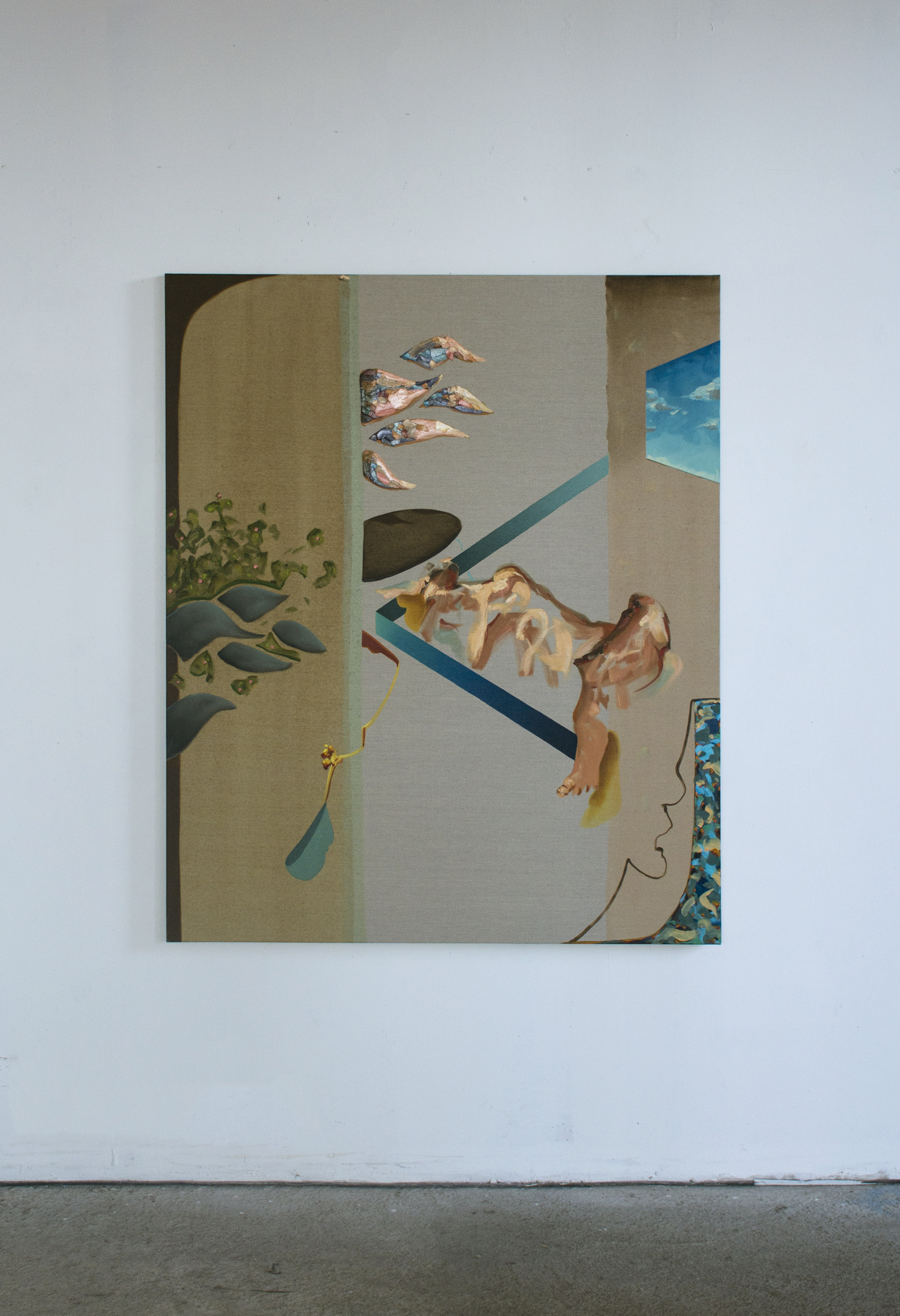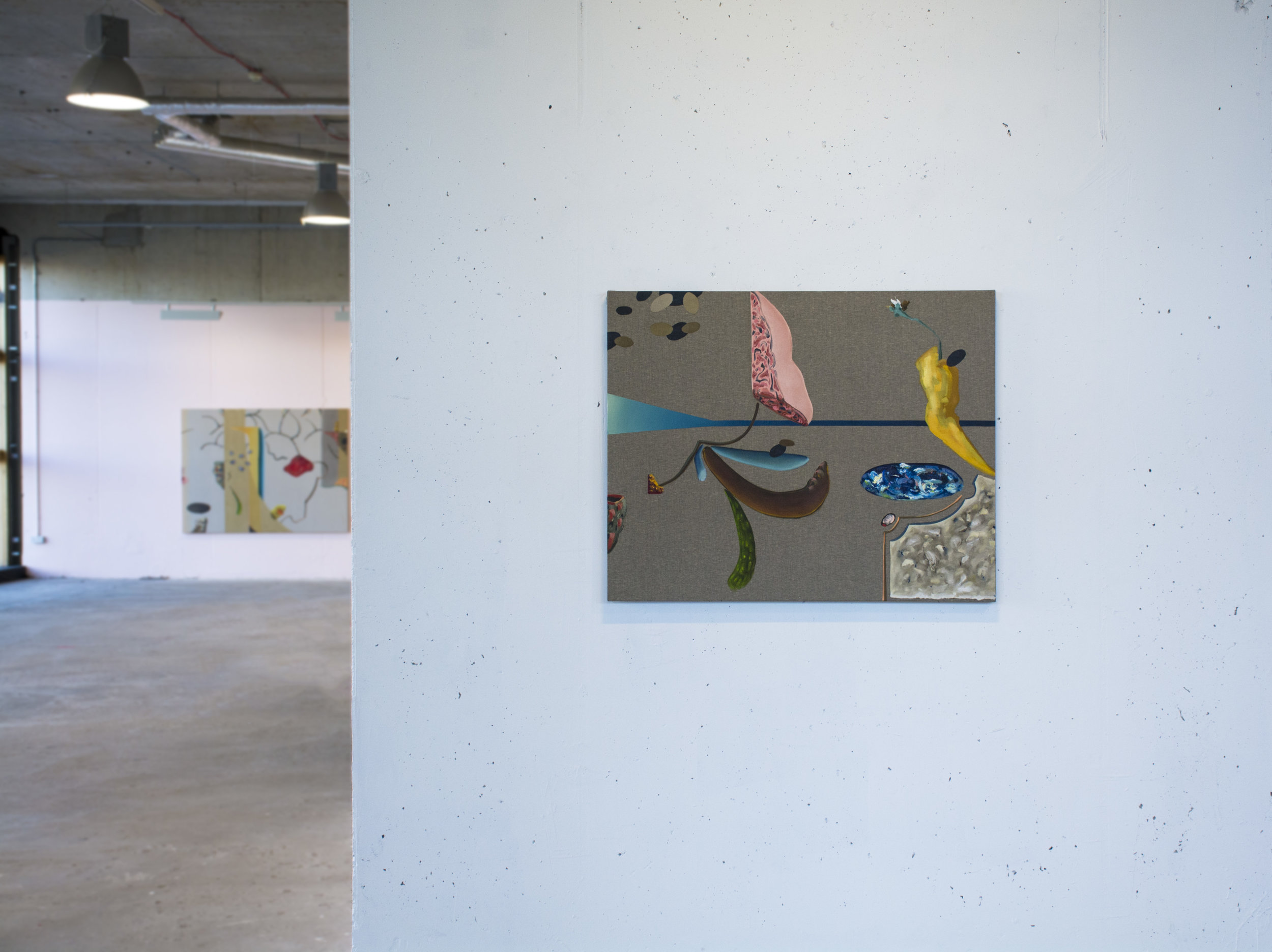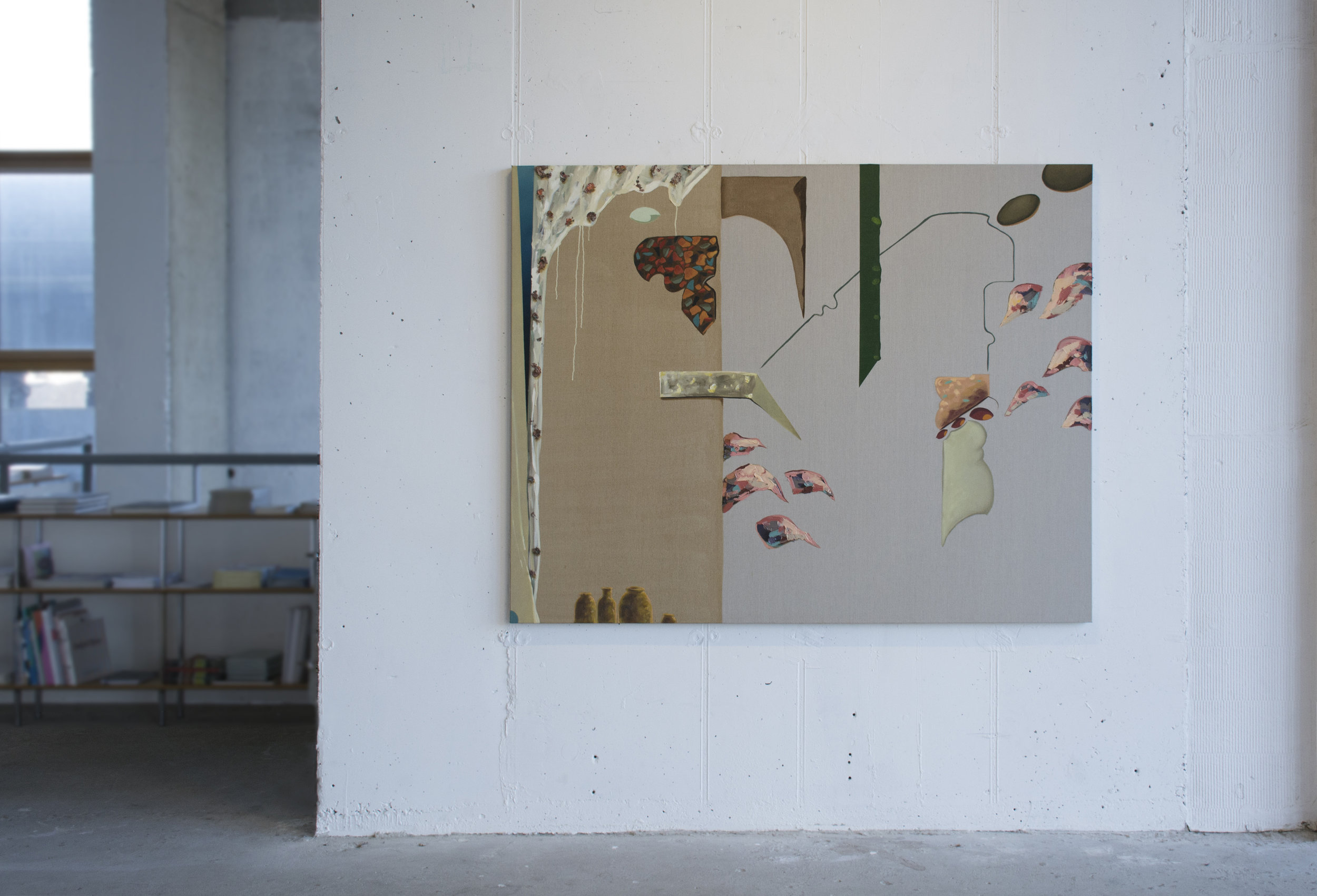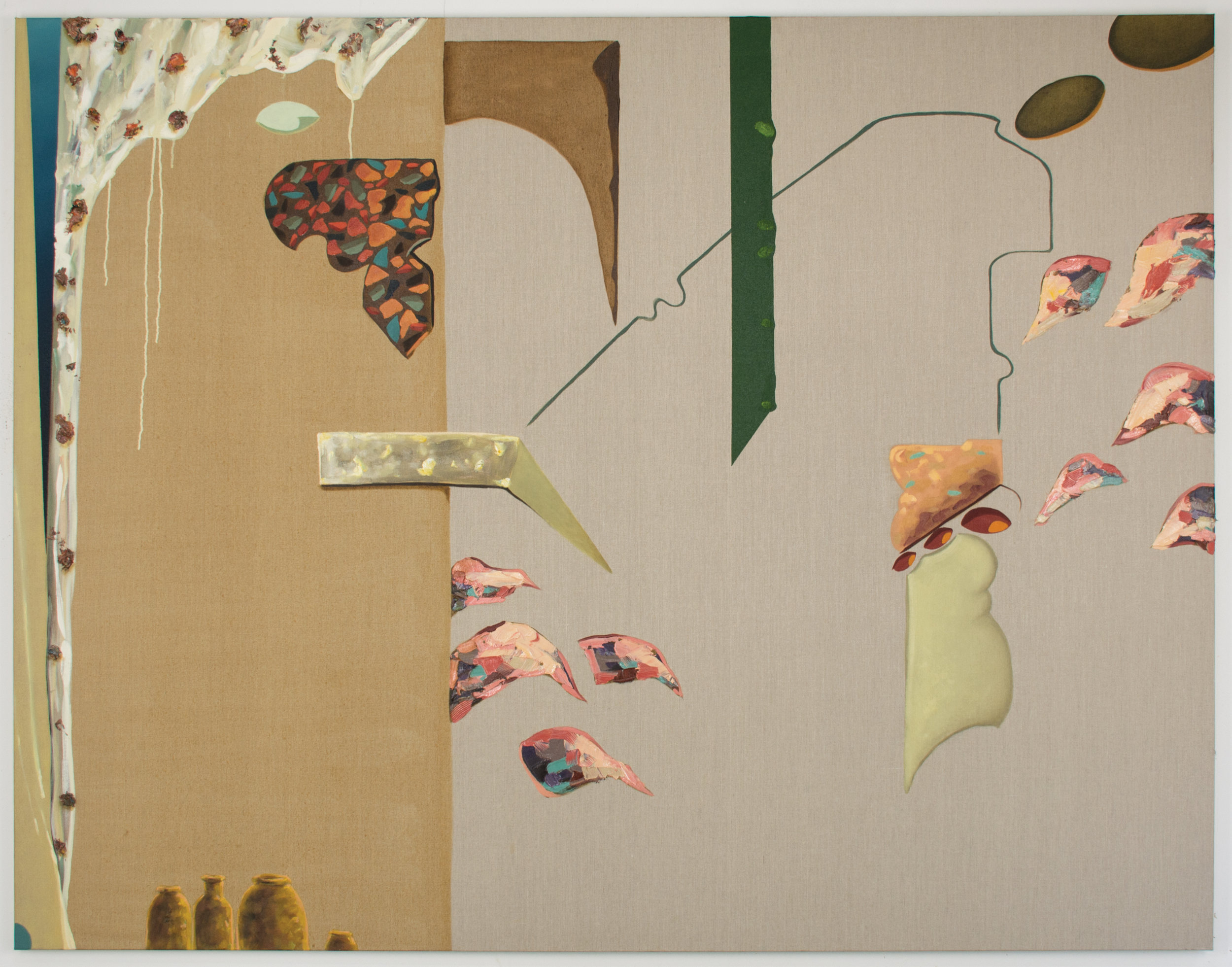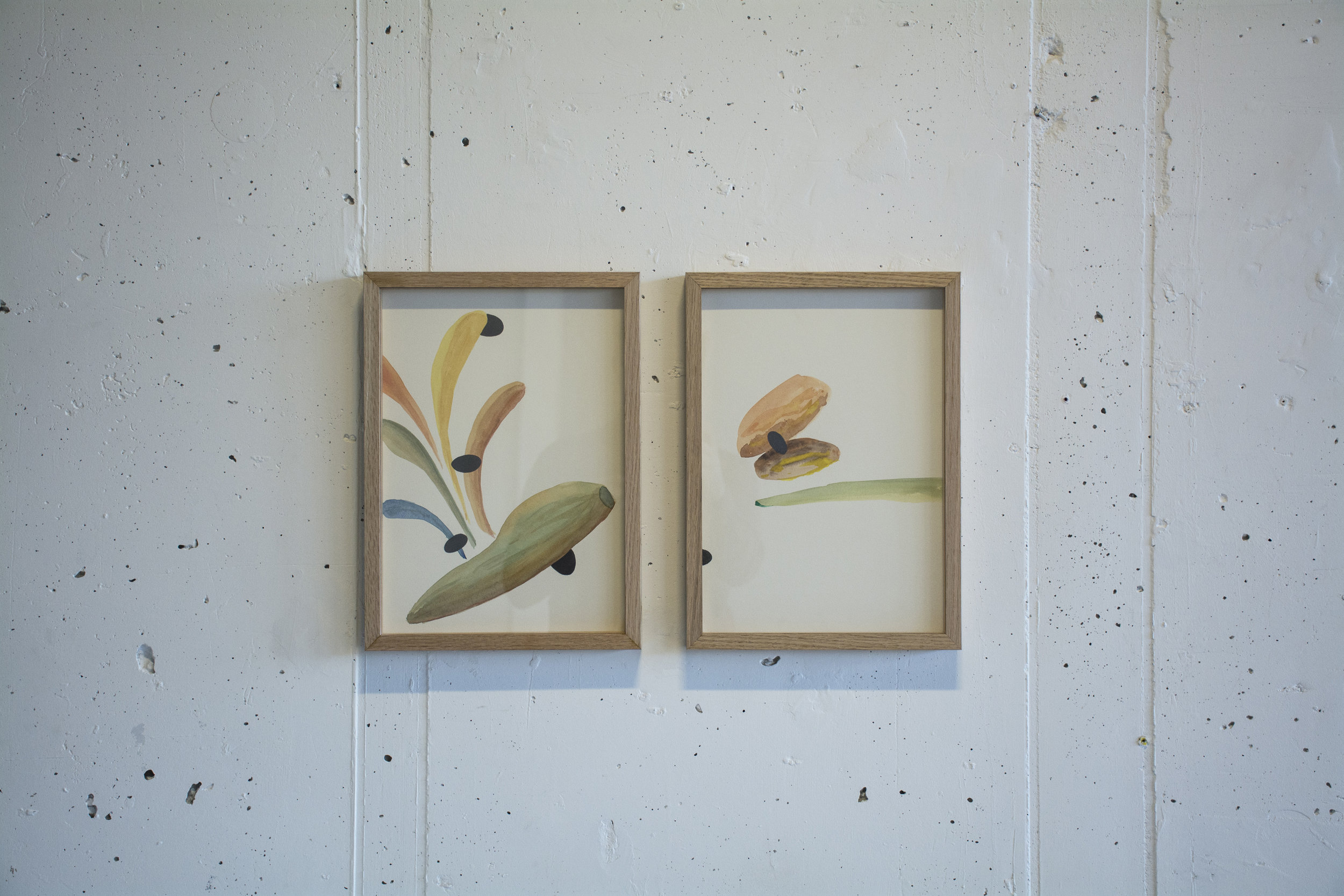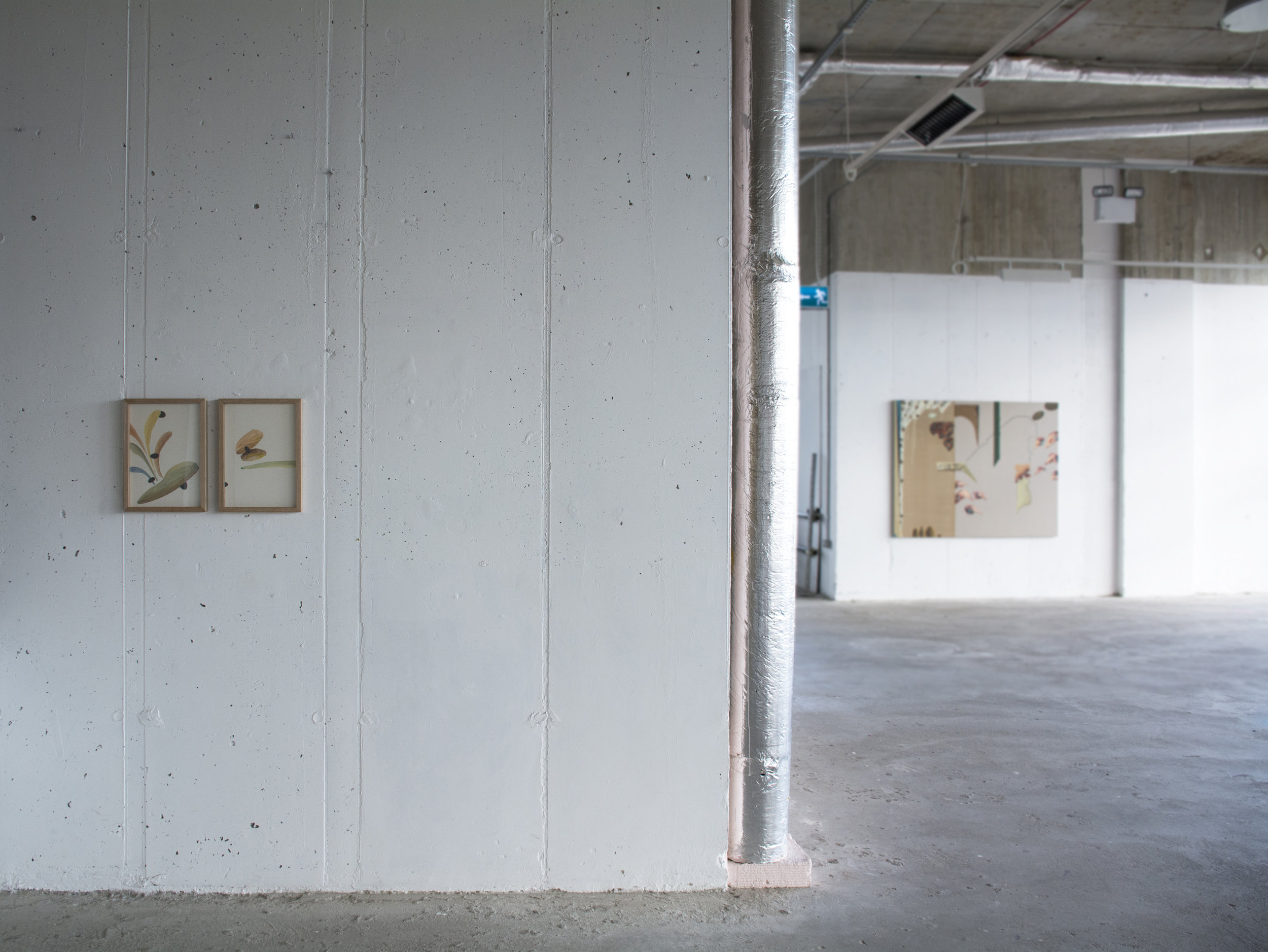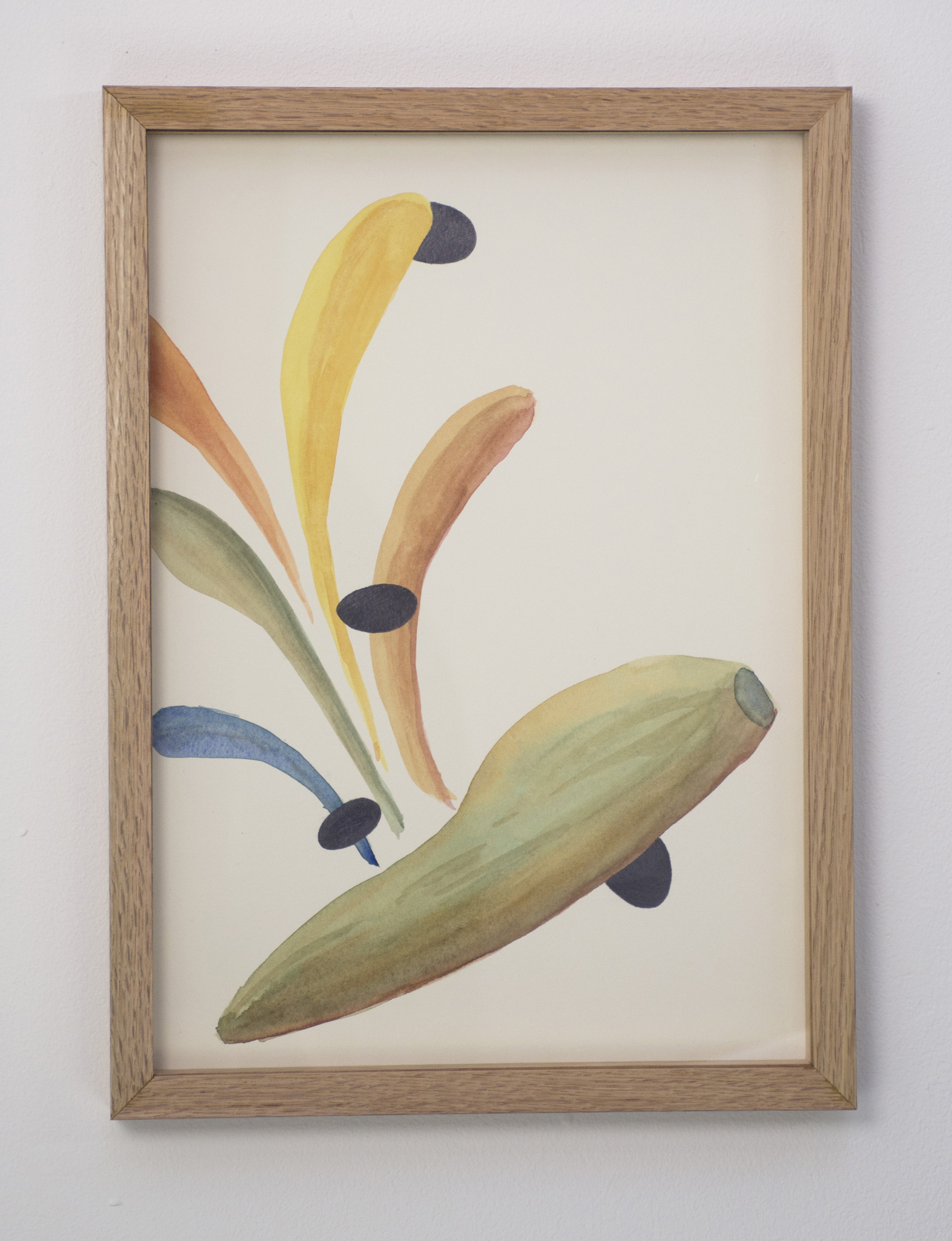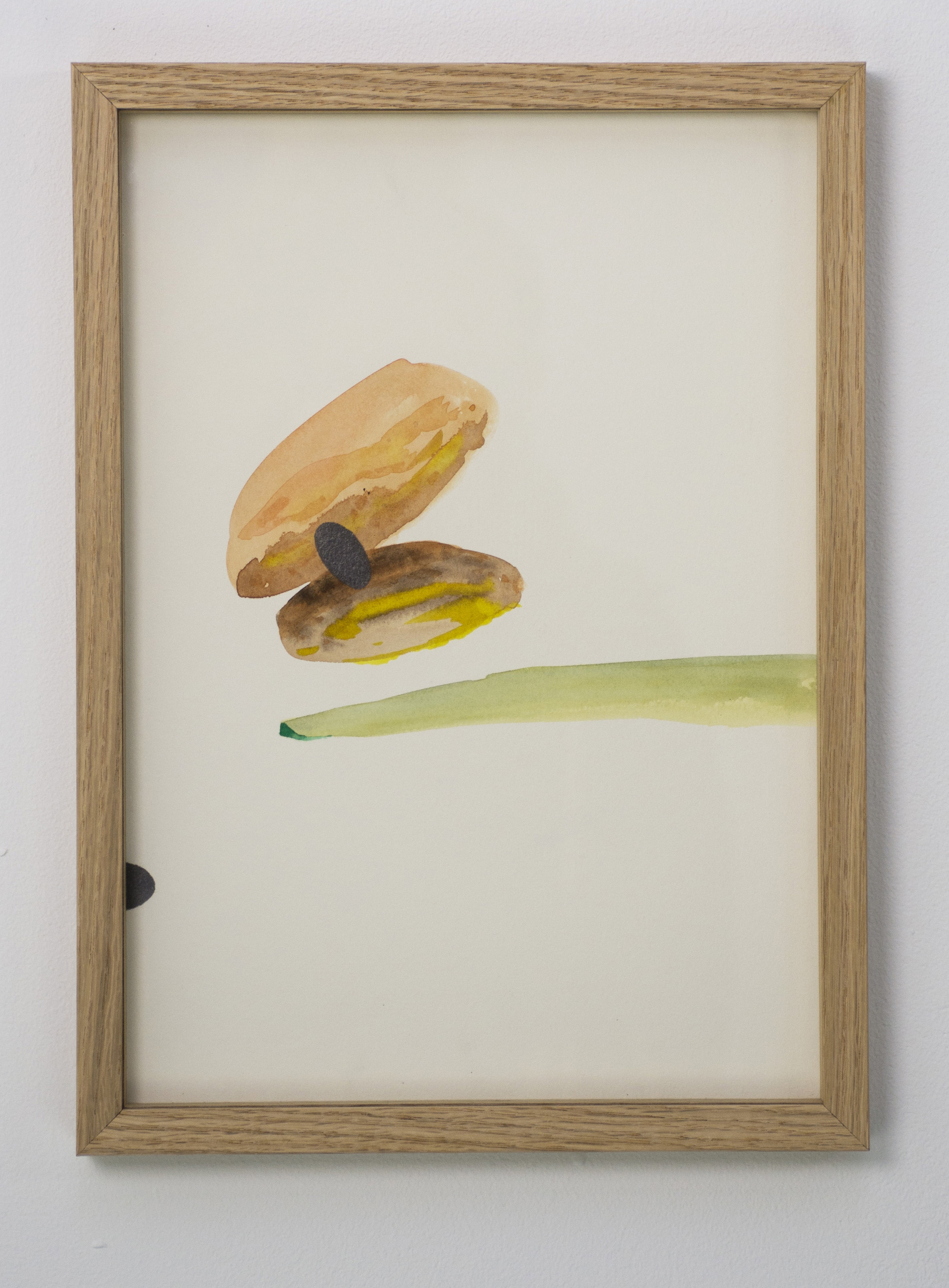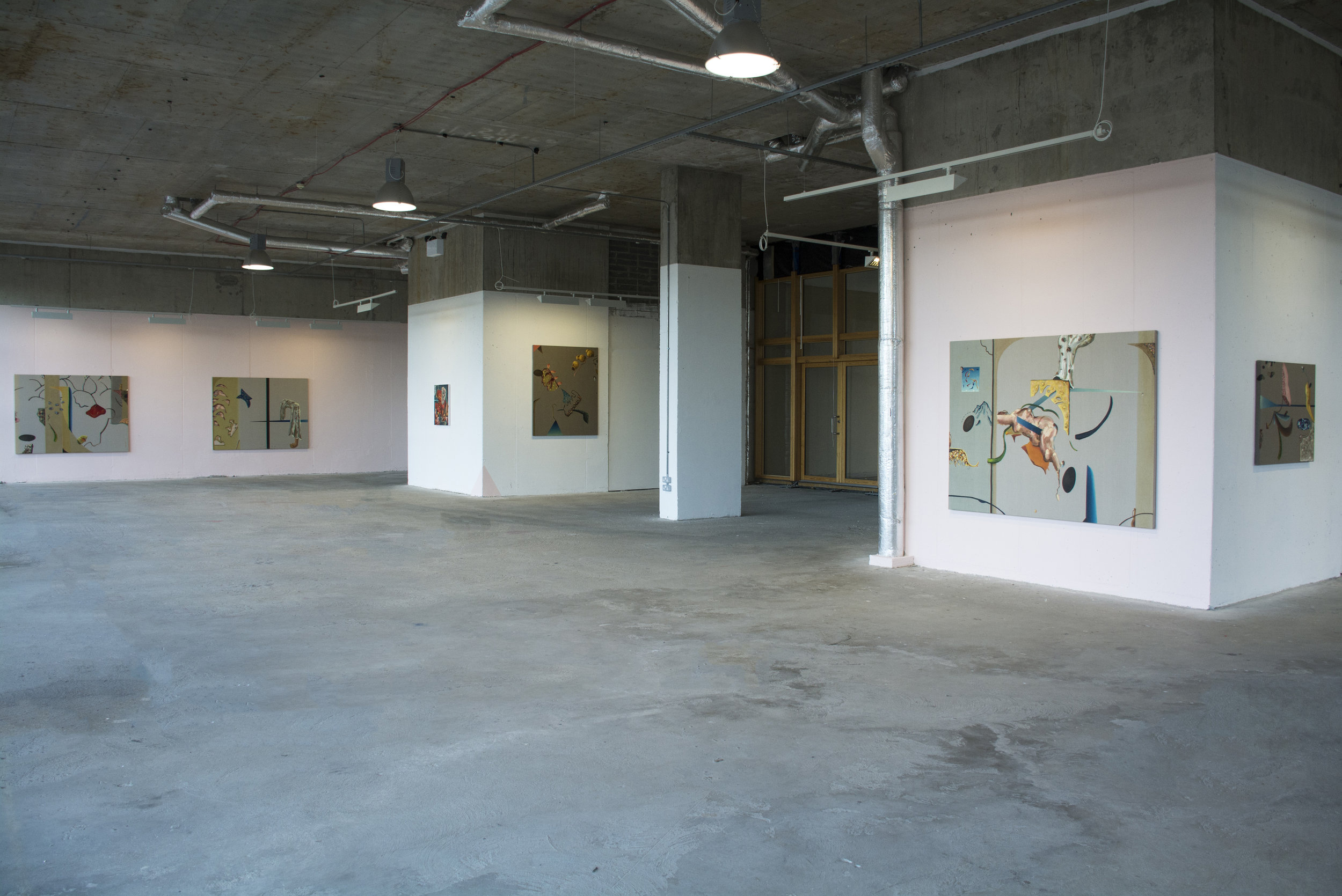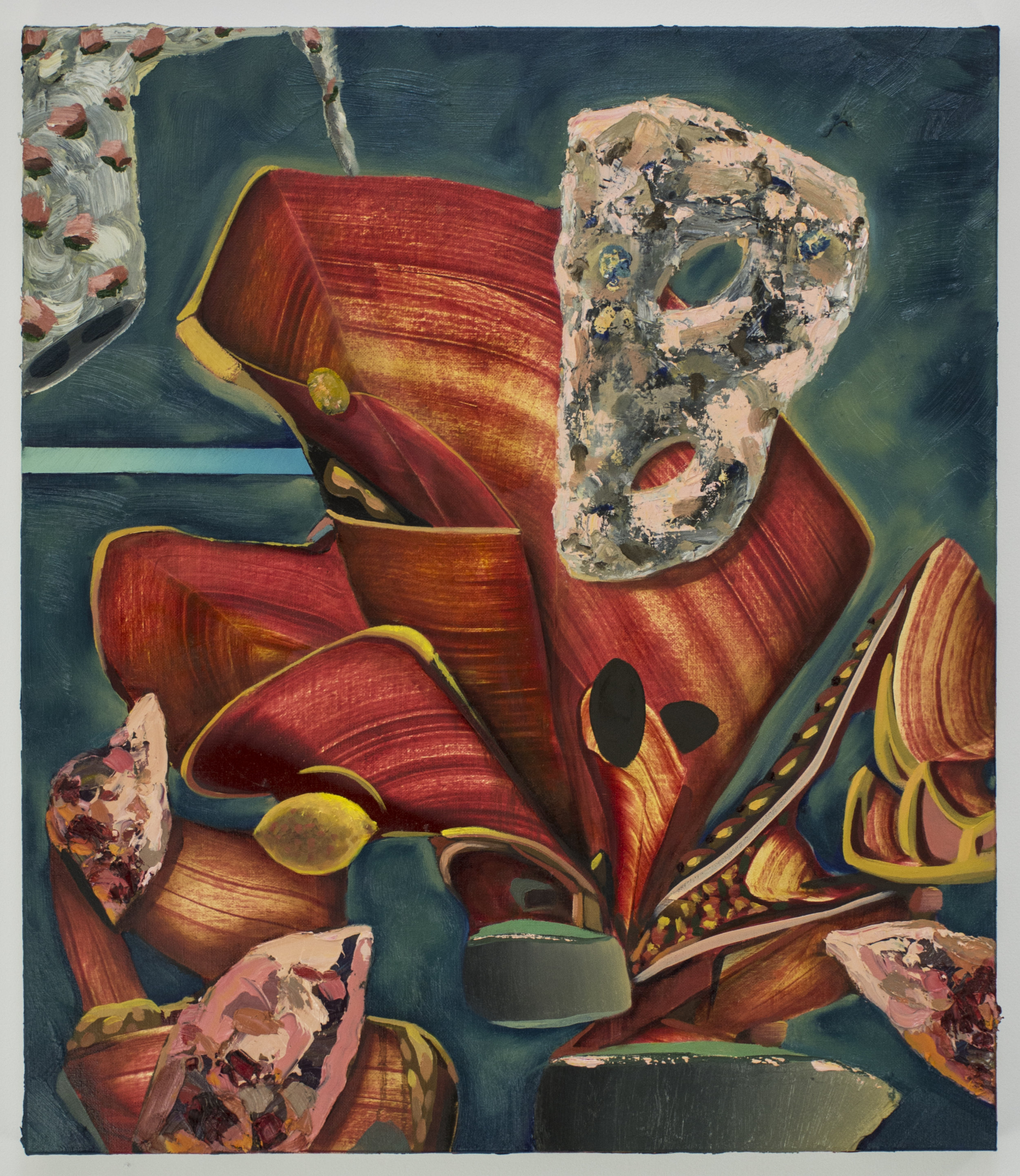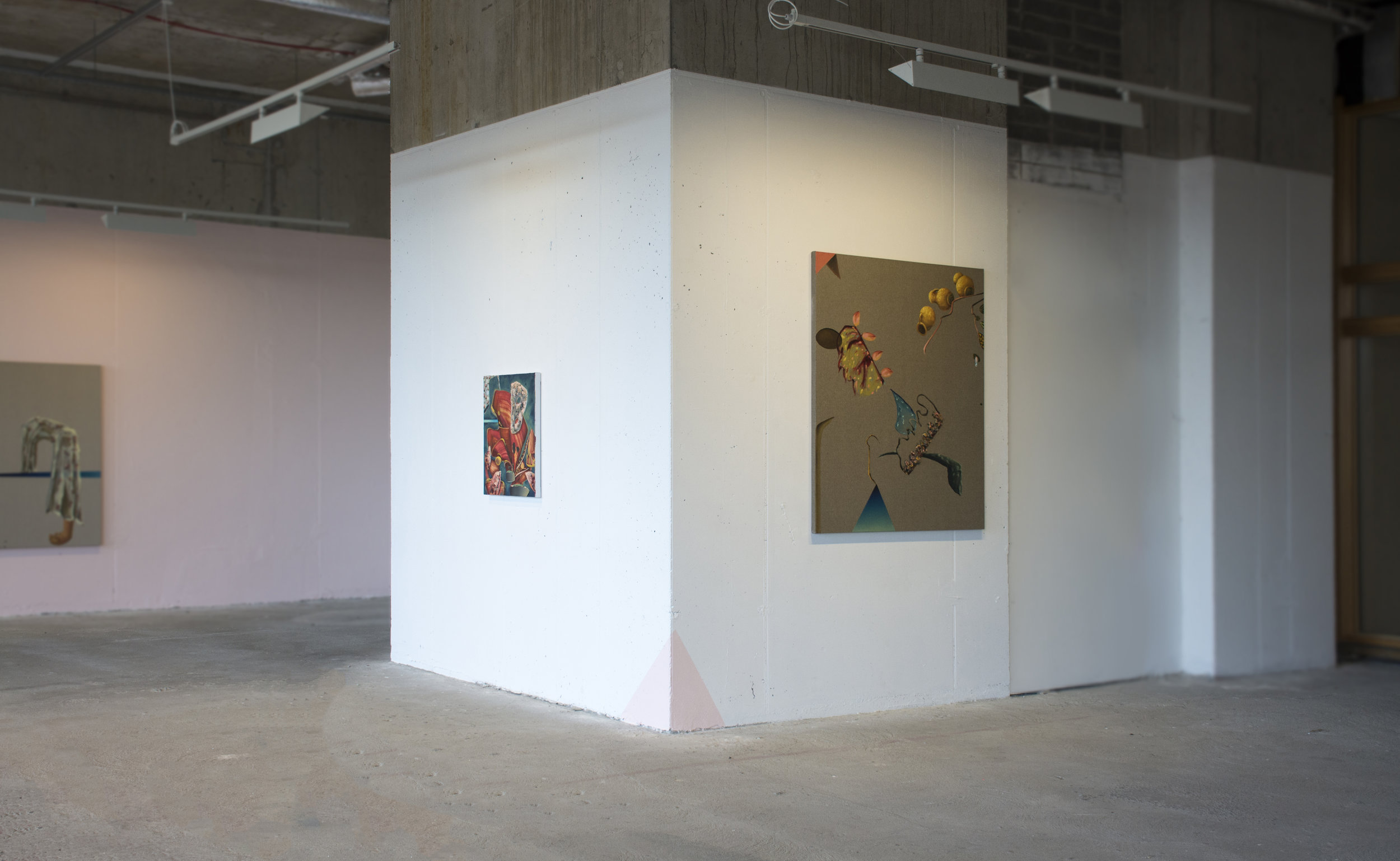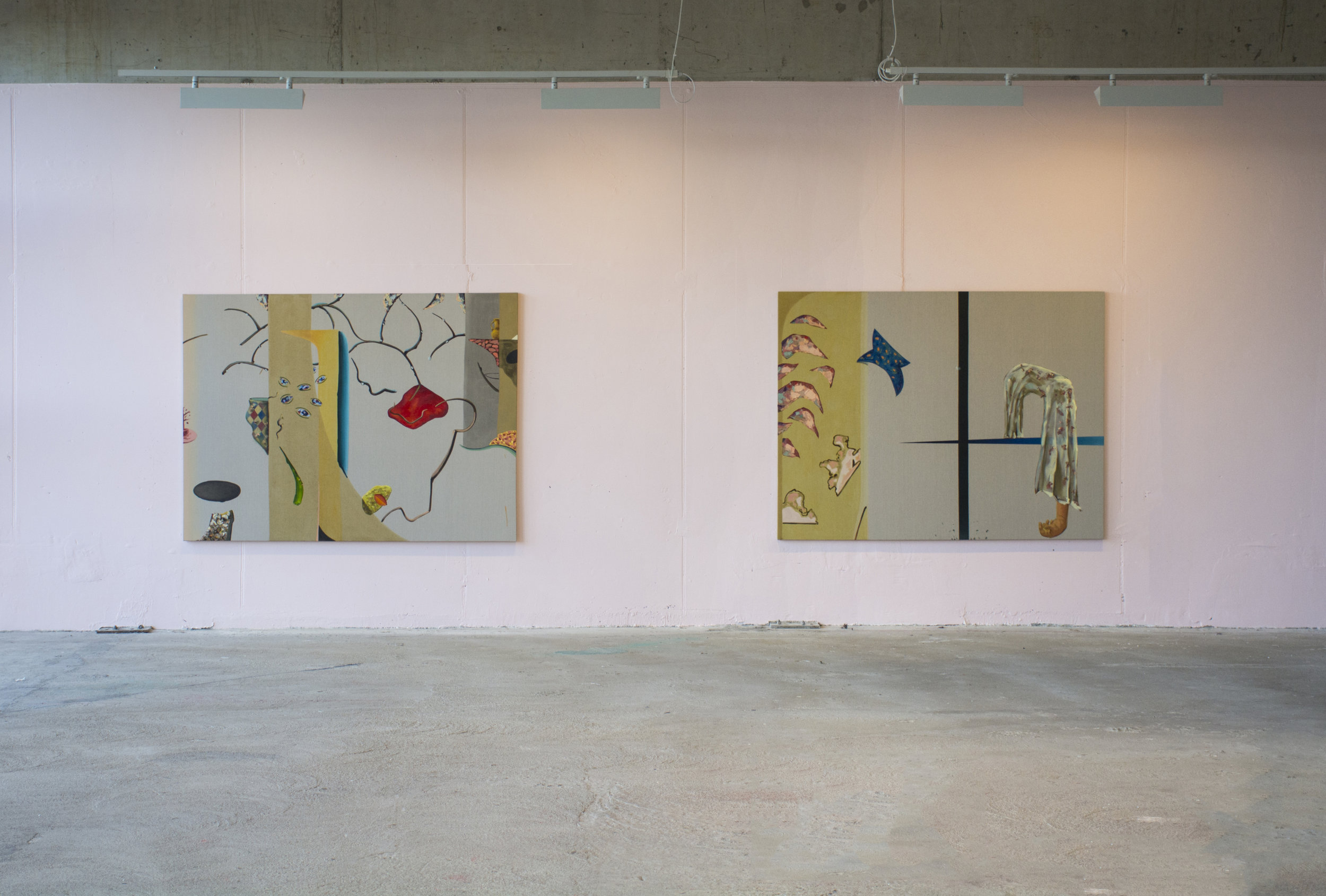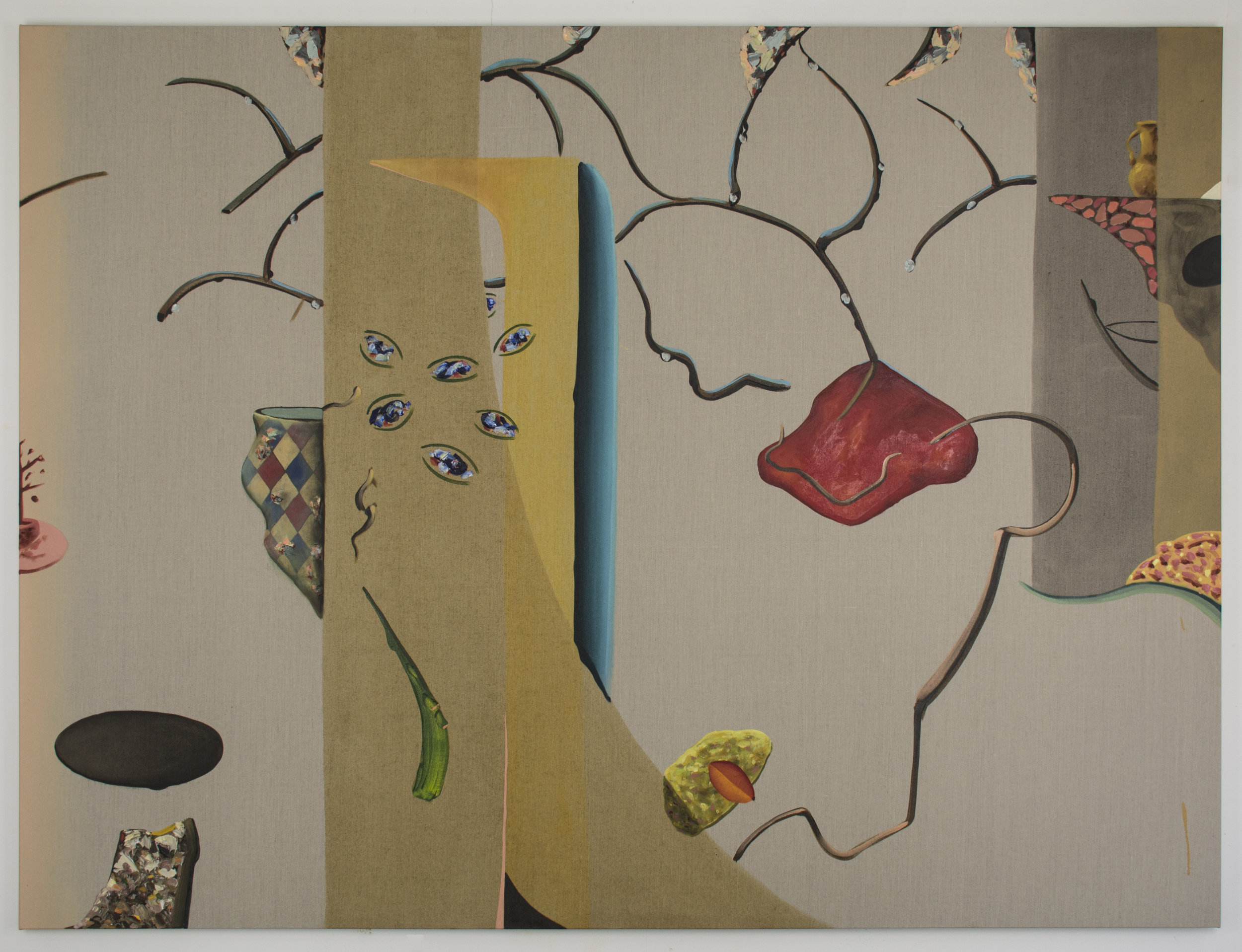Damien Flood
The Figure in the Carpet
November 29, 2018 - January 26, 2019
Opening reception November 29, 2018, 6 - 8 pm
Green On Red Gallery is delighted to announce a solo exhibition of new paintings, The Figure in the Carpet, by Damien Flood and the launch of a new hard-back monograph on the artist of the same title. Flood has marked himself out as one of the most distinctive and original artists of his generation since he first exhibited in the gallery in 2010. Flood's paintings defy easy definition and reward repeated and extended viewing as they slowly yield up their half revealed, half concealed figures and narratives. The eye is led along a dotted line or insistent painted edge before it ends up in a sumptuous thick build-up of paint, of pattern or of nothingness, akin to the floating world of figures and forms in a Francis Bacon. The pressure of the descriptive force is equal to the lack of a clear and easy resolution.
‘ Quickly, however, it became apparent that where meaning came away it came away in coarse and brittle fragments. It became apparent that ‘meaning’ was shards of rockface whose edges never realigned.
The feeling of these shards is the feeling of gums crowded and made sore by too many teeth. ’
The Figure in the Carpet, Damien Flood 'Organelle' by Sue Rainsford, pg 12
The Figure in the Carpet takes it’s title from the book of the same name by Henry James, first published in 1896. Told in the first person; the narrator meets his favourite author and becomes obsessed with discovering the secret meaning or intention of all the author's works. The author informs him that most critics, along with him, have missed the point, his secret ‘like a complex figure in a Persian carpet’. ‘The Figure in the Carpet’ has become a short-hand or idiom for the ‘key’ to understanding a writer’s work. Yet the story in which the idiom was born, refuses to open itself up to easy interpretations or analysis. After the story was published Jame’s contemporaries set themselves on a quest for the Figure as an identifiable physical entity. Similarly Damien Flood’s paintings search for an understanding. They form a record of a myriad of thoughts and ideas, piecing together a new world -one that tries to understand the world we live in. This new painted world is not easily discerned, the figure is fleeting and never fully whole.
In ‘Halves’ (2018) the bare linen surface creates a duality between the luscious concentrations of painted fragments and the flesh-like scooped mounds of paint. This work, like many in the show, conjure up the feeling of the artists own unease with the world around him. Where the viewer is set and what rules the artwork follows are up for debate. A draped form balances on a shard of sky, leaning out uneasily toward the viewer. It’s hand curls at the bottom of the canvas, seemingly trapped within the pictorial frame, while the interjecting black stripe pushes through to the canvas wall, dividing the picture plane.
A story about understanding a writers work that people do not fully understand, which in turn, is possibly the key to understanding all of the authors work. The duality within this story is paralleled within Flood’s work. The paintings teeter on the edge of edges, pulling at an image only to let go before it becomes concrete. Ambiguity and understanding are interchangeable, a definitive meaning is not the point. A core interest of Flood’s is how we see and read the world around us. This is mirrored on the canvas through different painterly approaches and the use of illustrative lines. Each approach pushes against the other for pictorial dominance. Flood ́s arrangements of disparate fragments seem to illustrate the futility of illusion, emphasising instead the aspect of painting through multiple stylistic variations, each of these conveying distinct and often conflicting ideas and ideals.
'Flood’s paintings — in some ways like Albini’s attitudes and effects — are questing experiments in achieving such transformative, destabilising encounters. There is ‘rupture’; there are ‘cuts’ and there is a necessary commitment to ‘mutation’. These paintings are the vigorous outcomes of urgent, intense imaginative processes, and the products of a insistently independent artistic spirit.'
The Figure in the Carpet, Damien Flood " Rawness and Rupture: Damien Flood " Declan Long, pg 32
The large scale painting Neighbour (2018) features a Bacon-esque figure twisting through the raw linen picture plane. It’s torso appearing to be cajoled into the space by a shard of sky, almost teasing the figure with the world outside. The picture plane is divided by flat washes of colour over the bare linen. The left blue wash featuring a picture seemingly held in place by a thumb print, creating pictures within pictures. Shimmering yellow ledges hover through the space, framing a painterly rhythm to the work. While in ‘Alcove’ (2018) elements jostle for perspective dominance on a similarly bare linen canvas. Awkwardly painted jars sit uncomfortably at the bottom left of the canvas, destabilising the pictorial depth -the jars contents and purpose unknown. Behind them, thick impasto flesh-like leaves jut out underneath the brown wash wall bringing a depth to the scene while adding to the overall feeling of ritual and happening prevails over the scene.
In the context of the exhibition the title also alludes to the act of seeing imagined forms and shapes in the everyday world around us. Silhouettes of objects creating a figure, intricate designs in a carpet conjuring up far off lands or faces appearing in hedges in low yellowing street light. The arrangements of disparate fragments within Flood’s paintings seem to form a similar function, allowing for multiple readings of new forms and tangential journeys. He uses a mixture of visual languages and motifs comprising of abstract forms, outlines, vases, hands and torso’s that reoccur throughout the work. Whereas some of these motifs bear a figurative semblance that allows for a certain degree of recognition, still others remain exempt from any obvious traceable traits and thus removed from any context. These primarily abstract pictorial marks appear to be puzzle pieces on a plain, floating in a void, loosely recalling a former composition or memory, a patch of paint, or conveying a fleeting impression of reality. They are left for the viewer to complete their narrative or meaning. This is apparent in the large raw linen painting ‘Cabin View’ (2018)(illustrated). In this work twisting twig-like curls of paint lead the eye through the fragmented picture plane. A harlequin patterned vase ornately floats behind the central panel of colour, alluding to a depth within the canvas. The painting teases the viewer with many different visual orientations, interior and exterior merge into a series of movements. The linear elements map out many visual possibilities, heads, arms, mountains, fluctuate within each one of the disparate lines. Everything is permitted but nothing is true.
Artist's talk and events for the exhibition will be announced in early January 2019.
